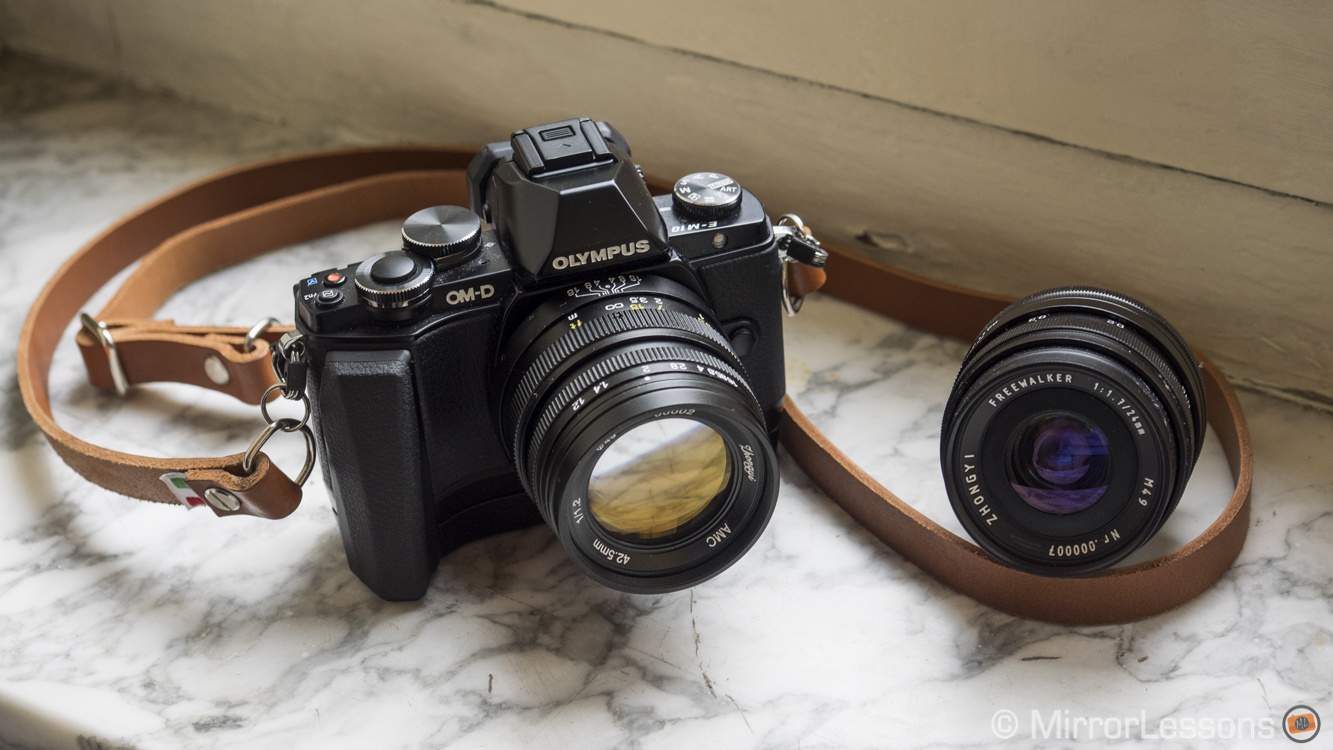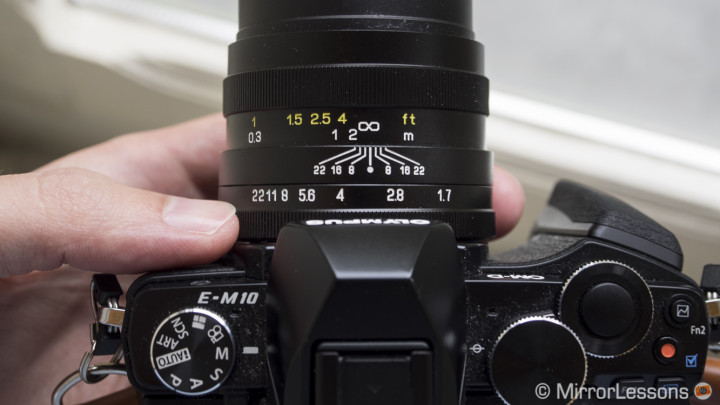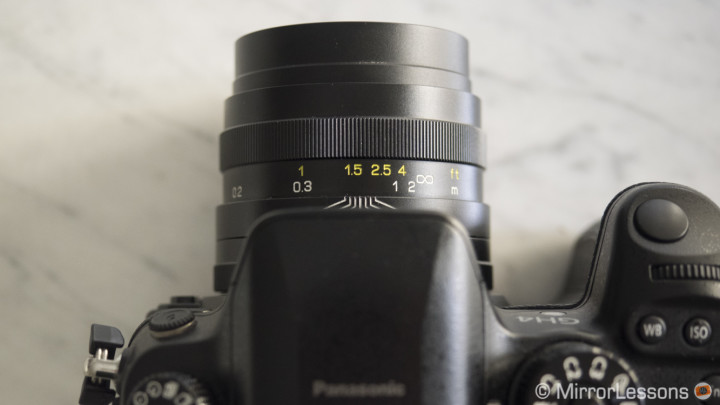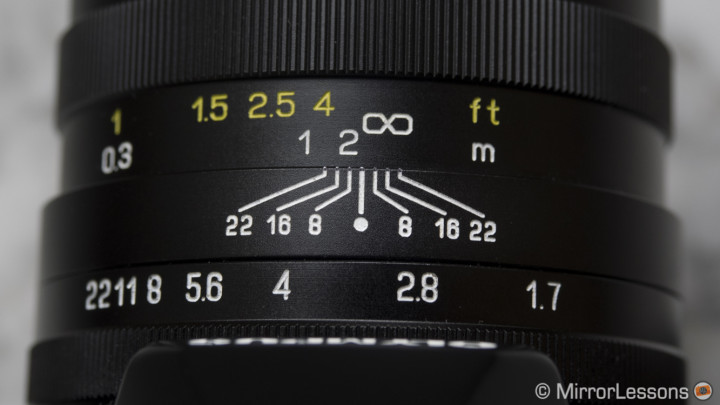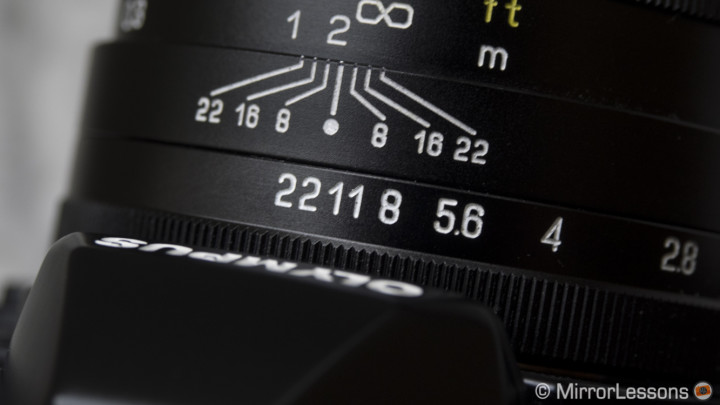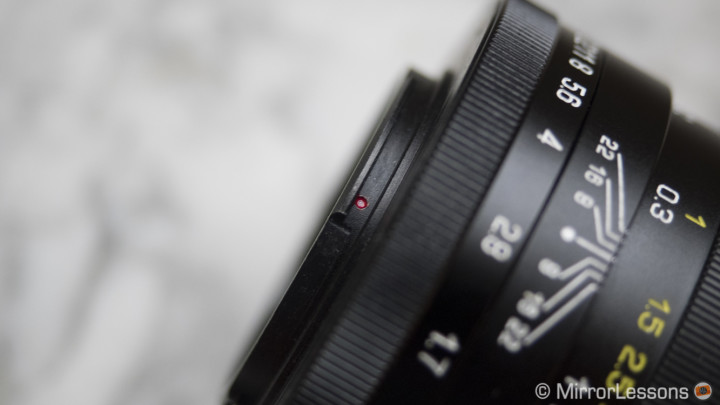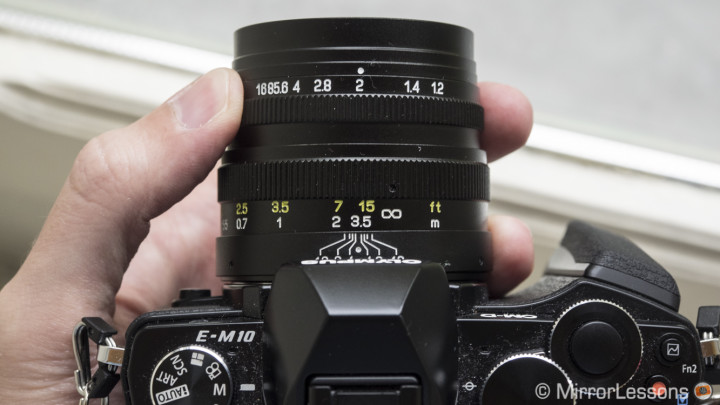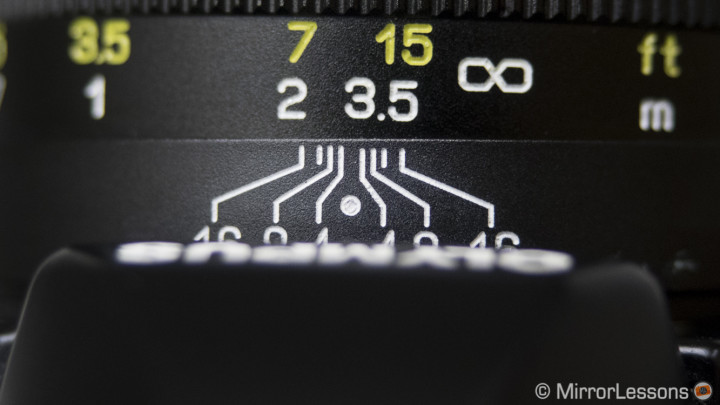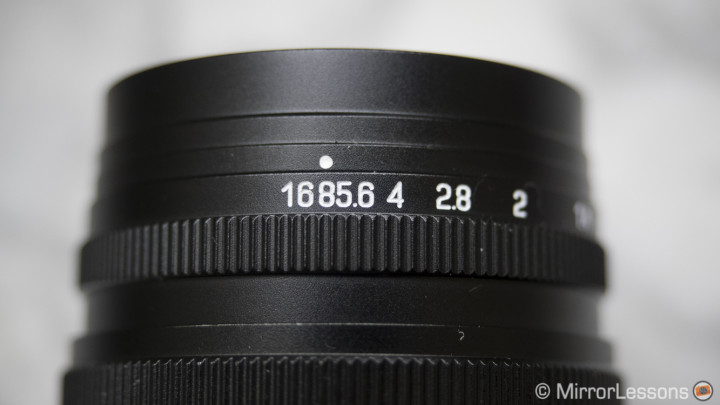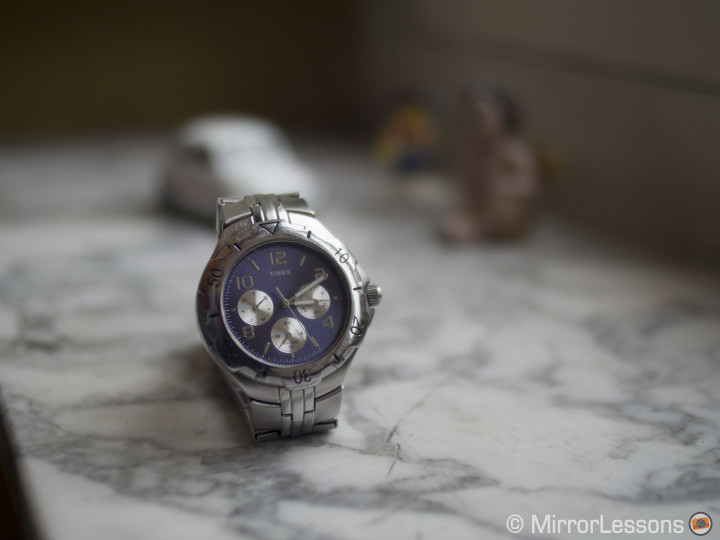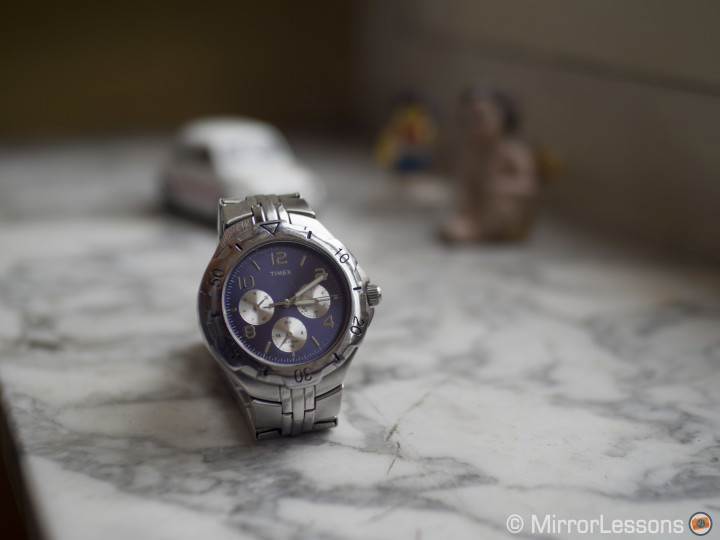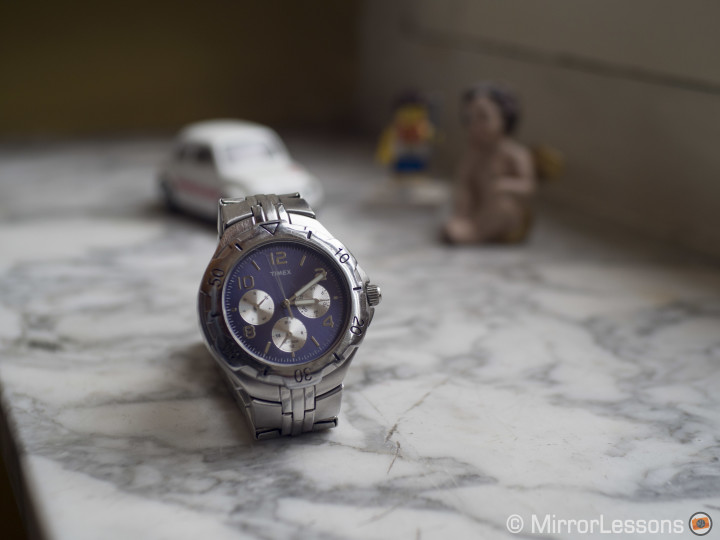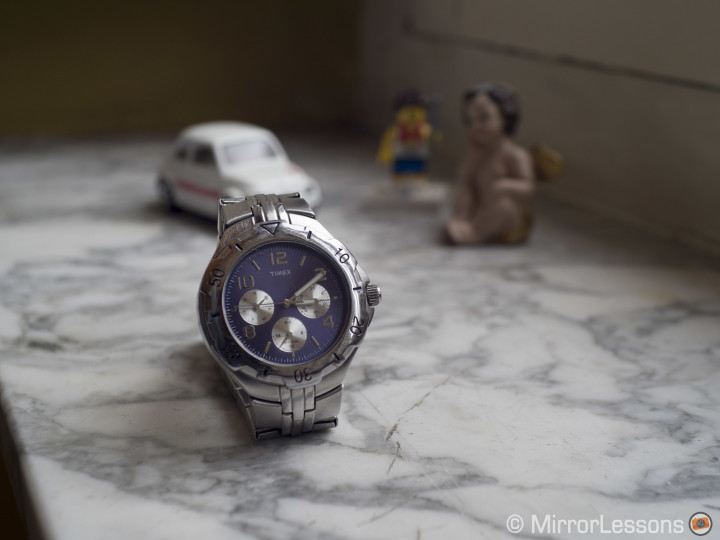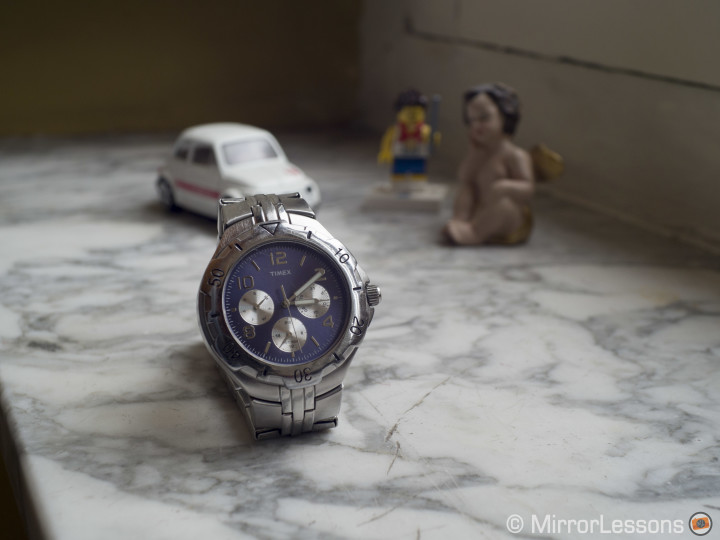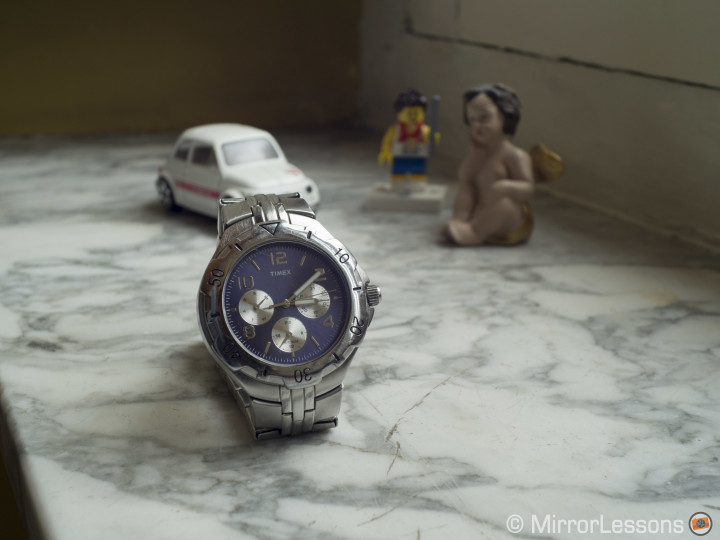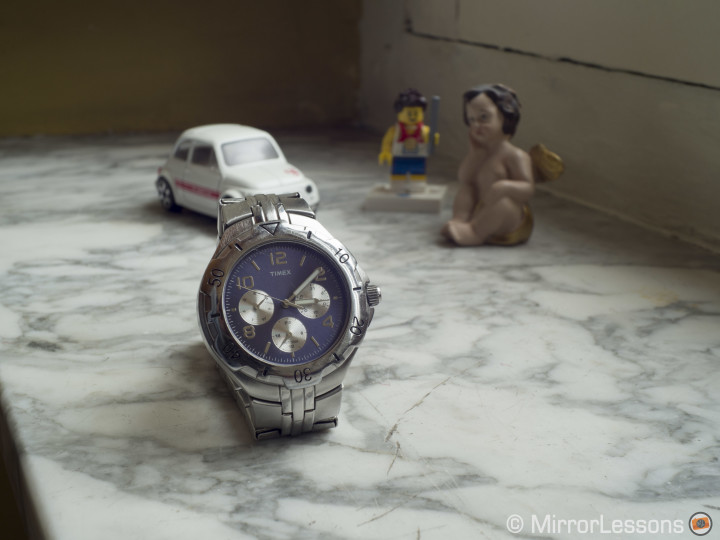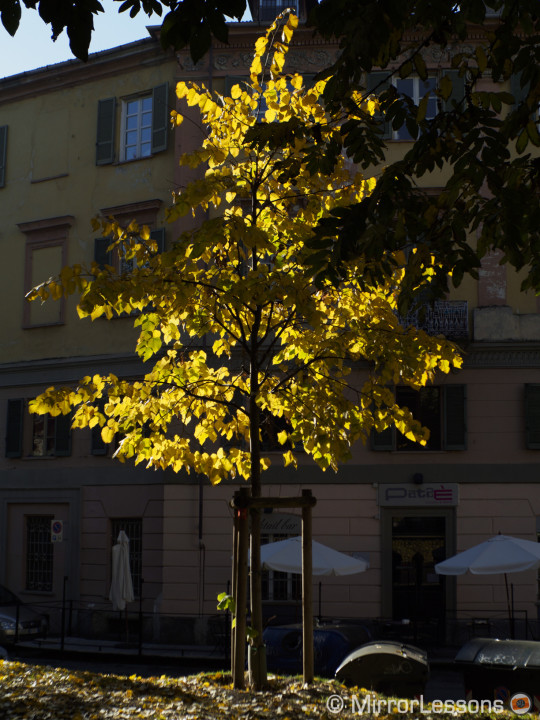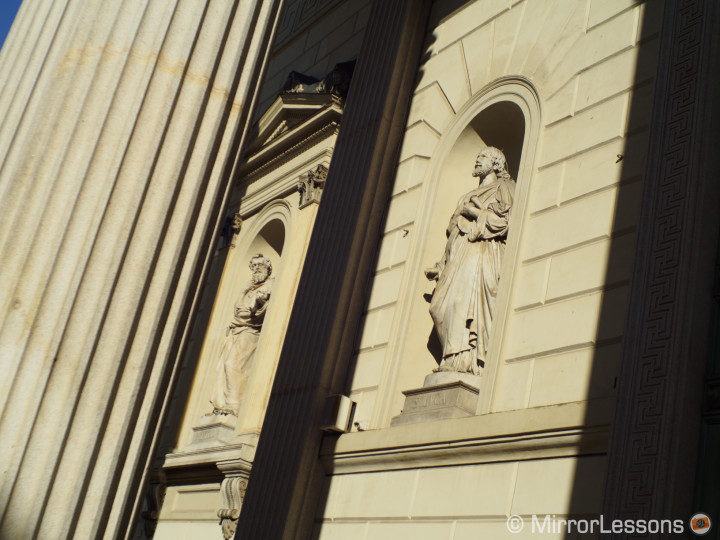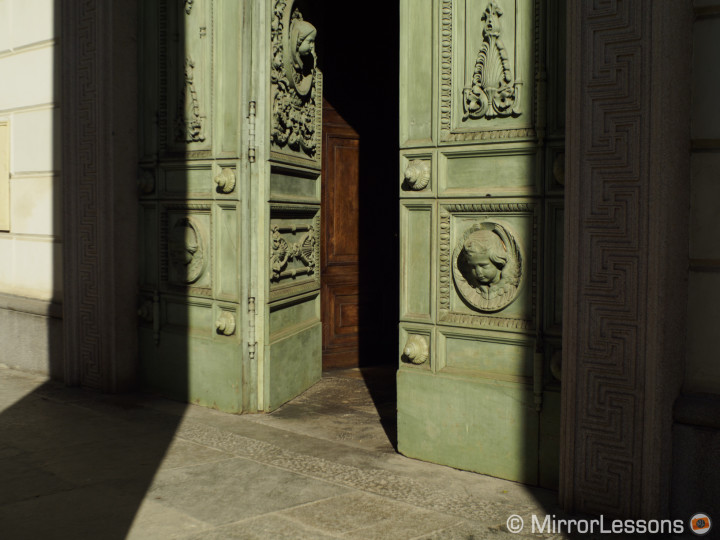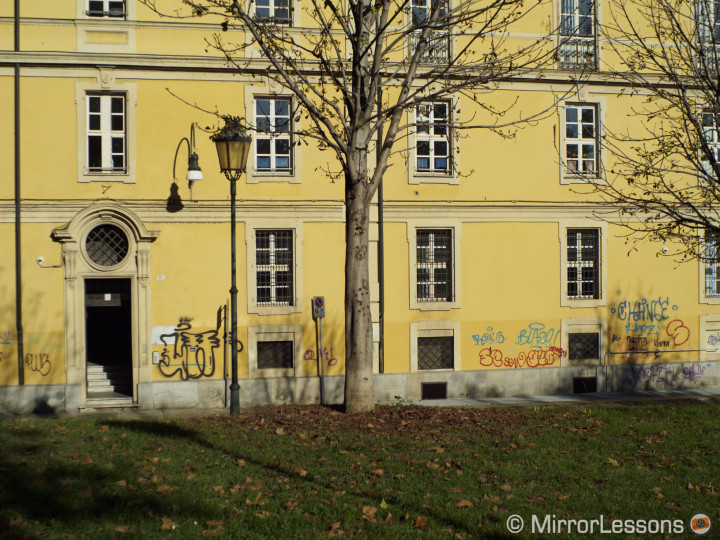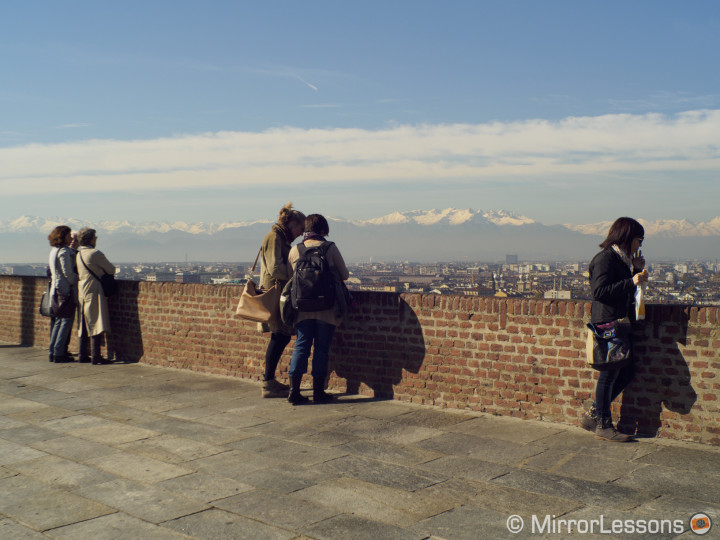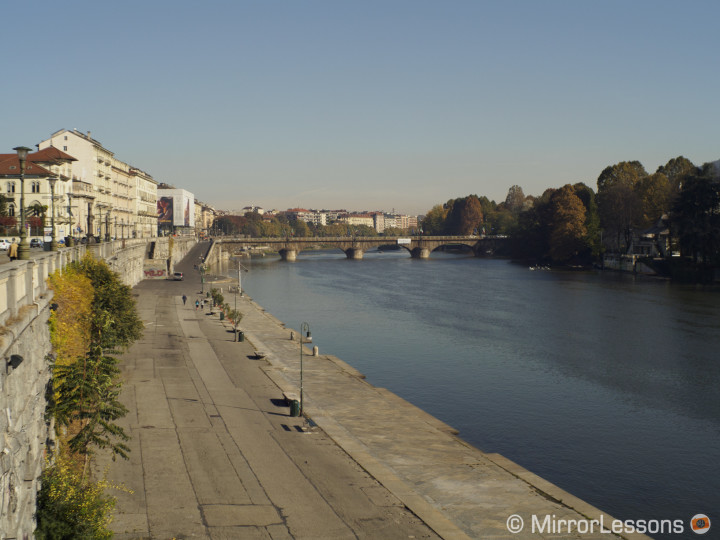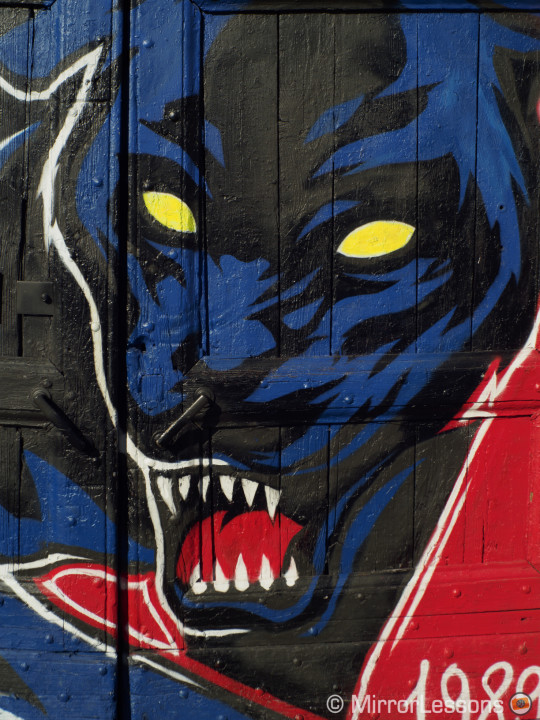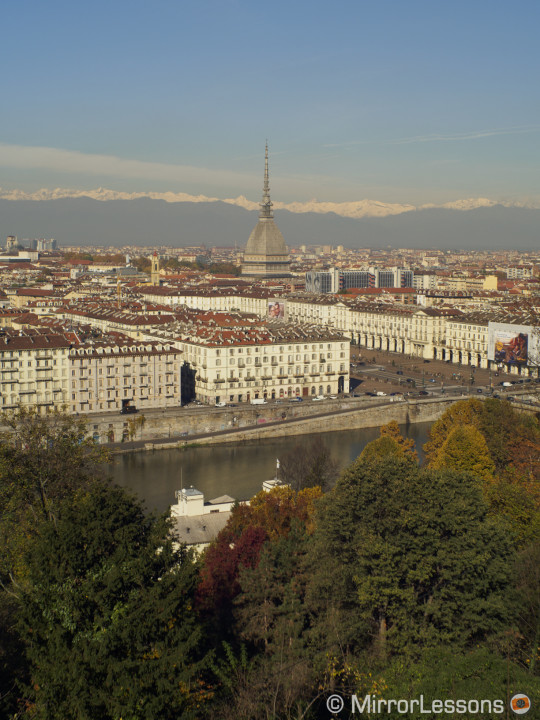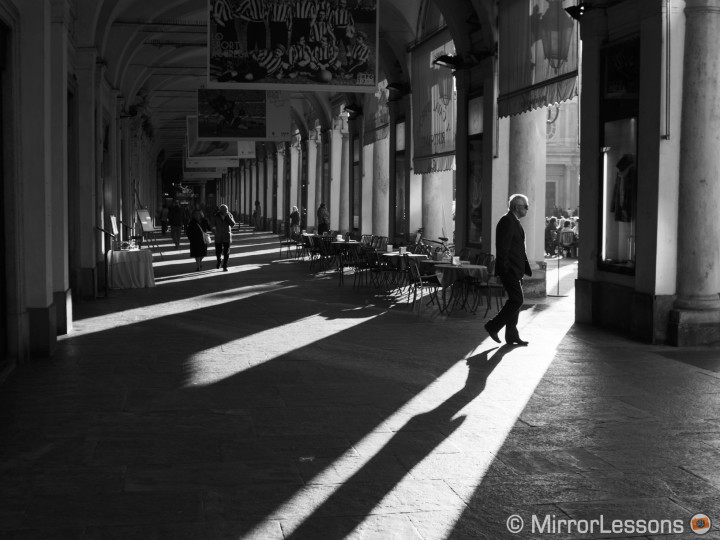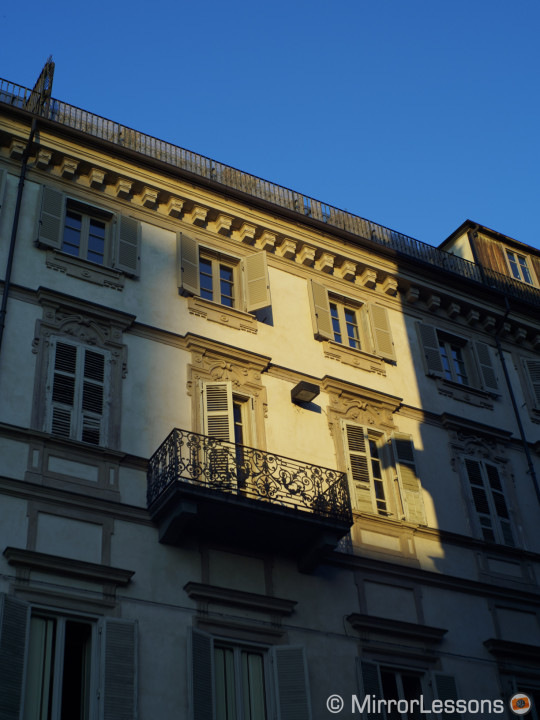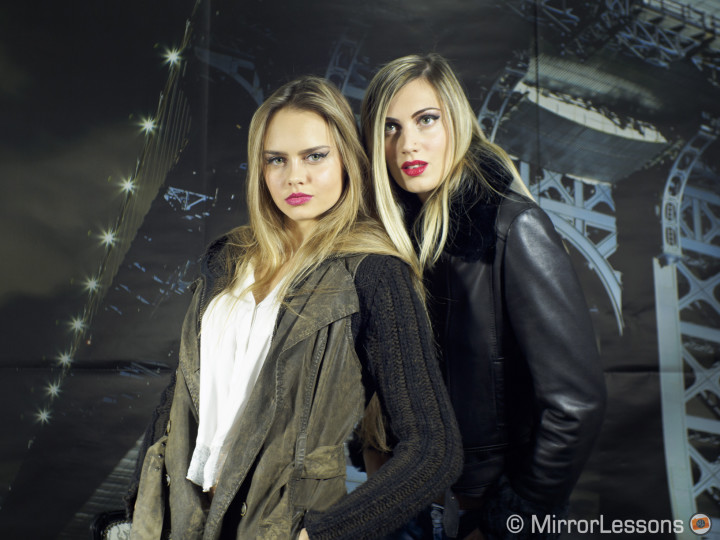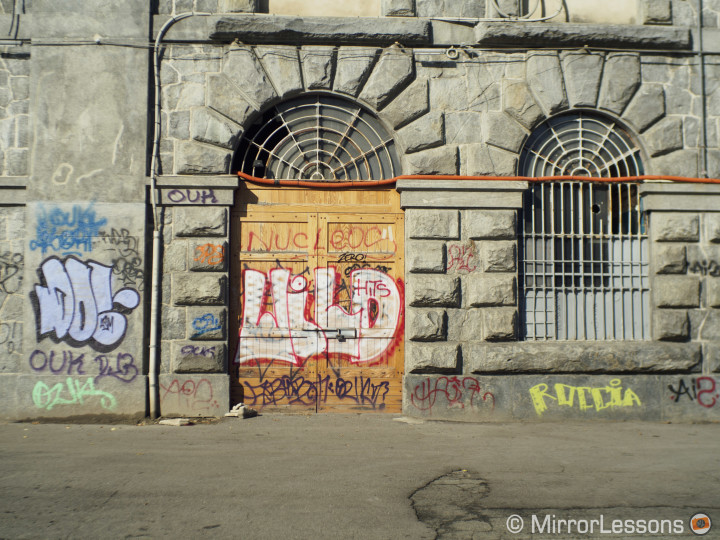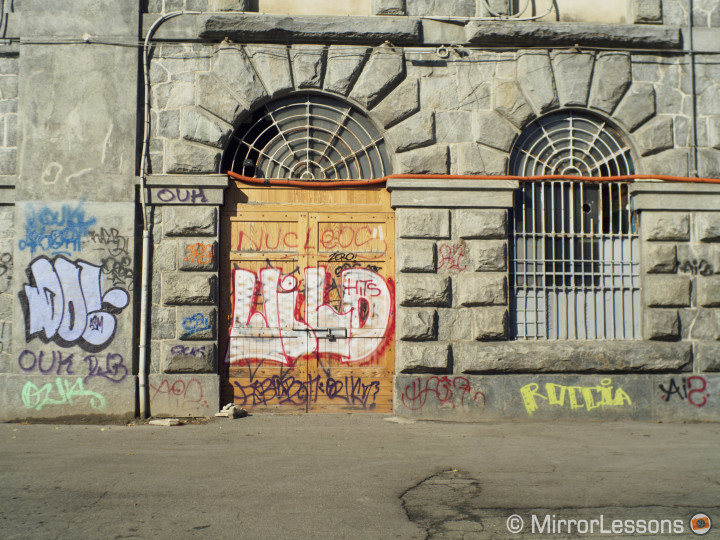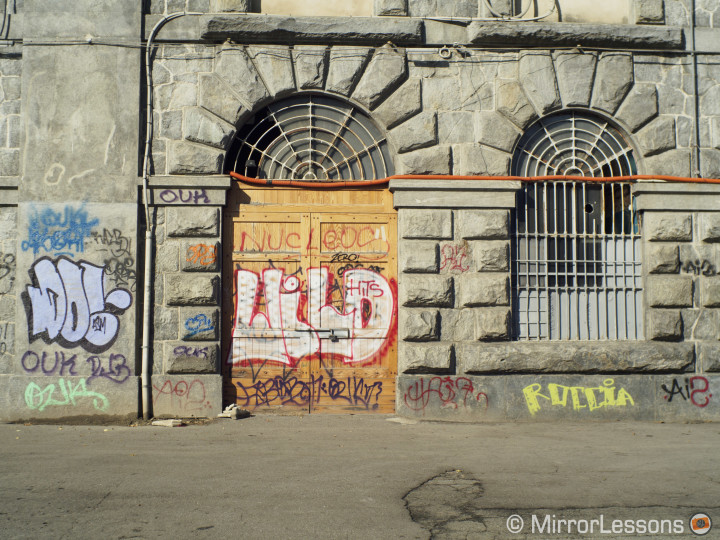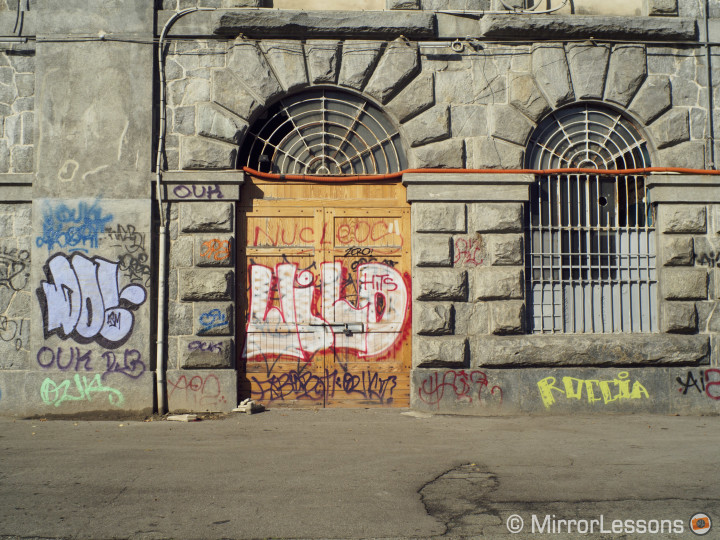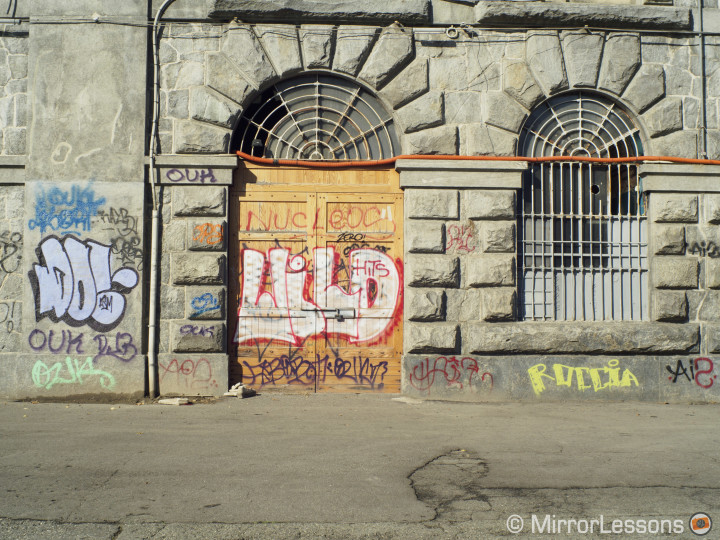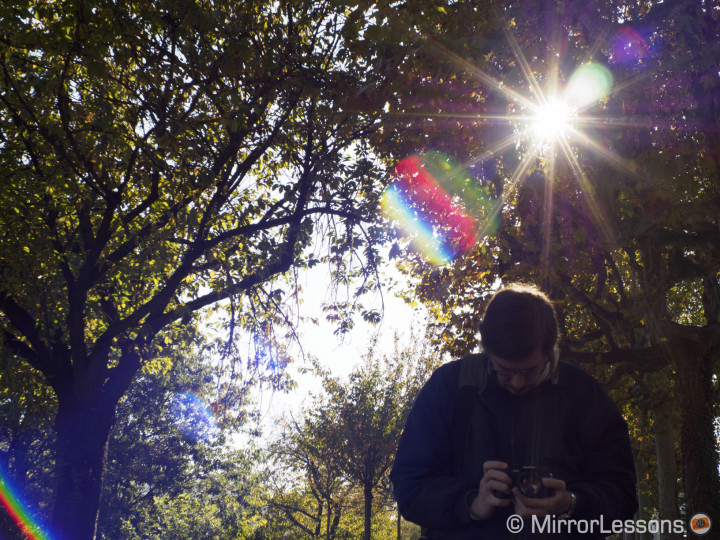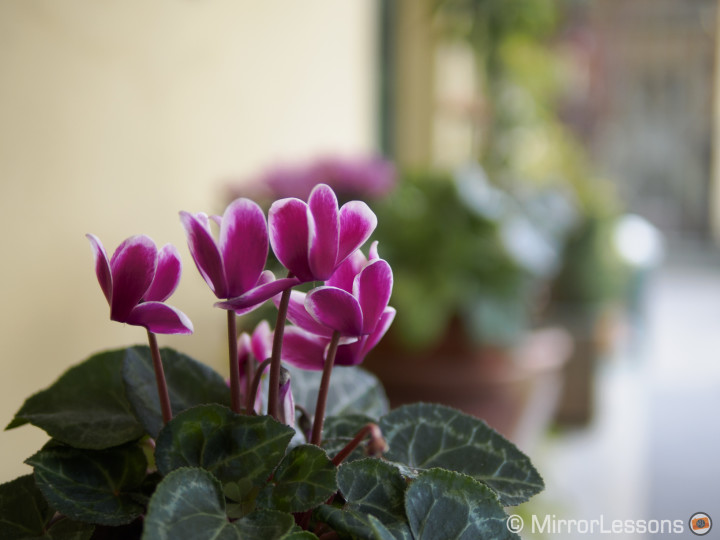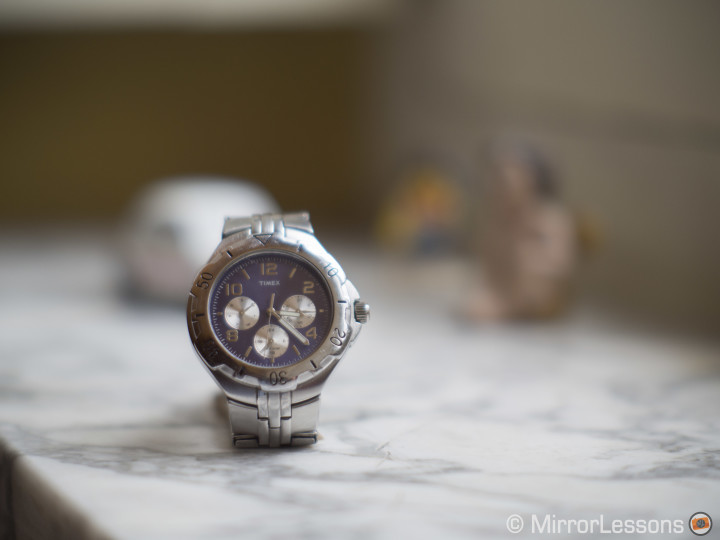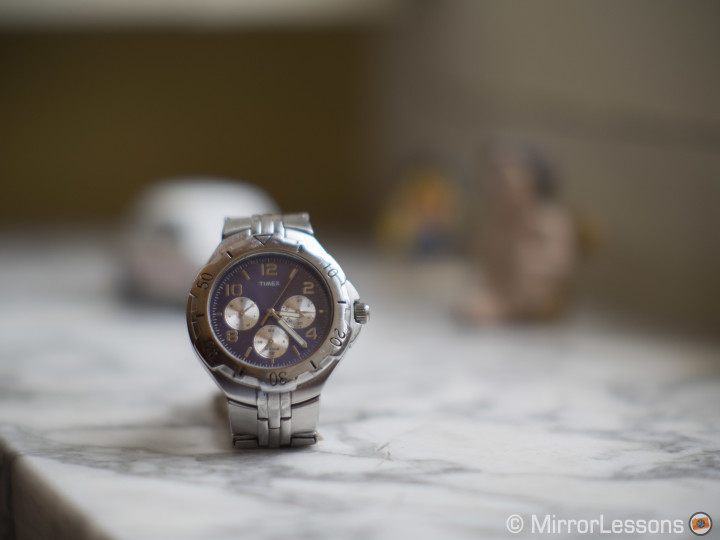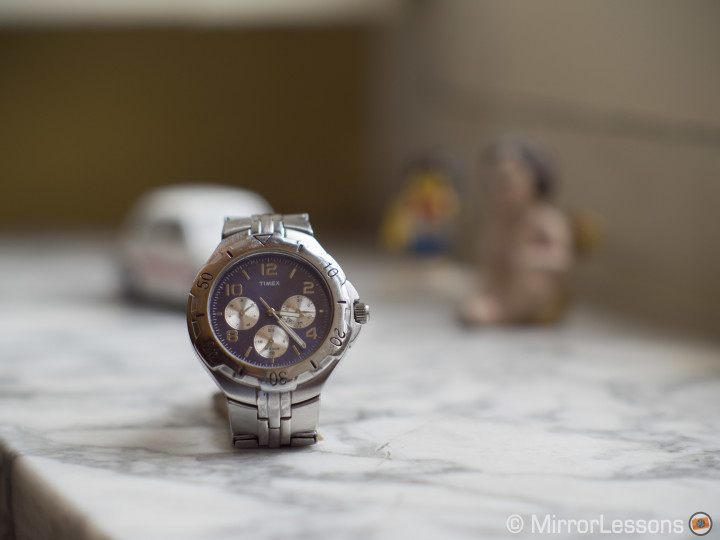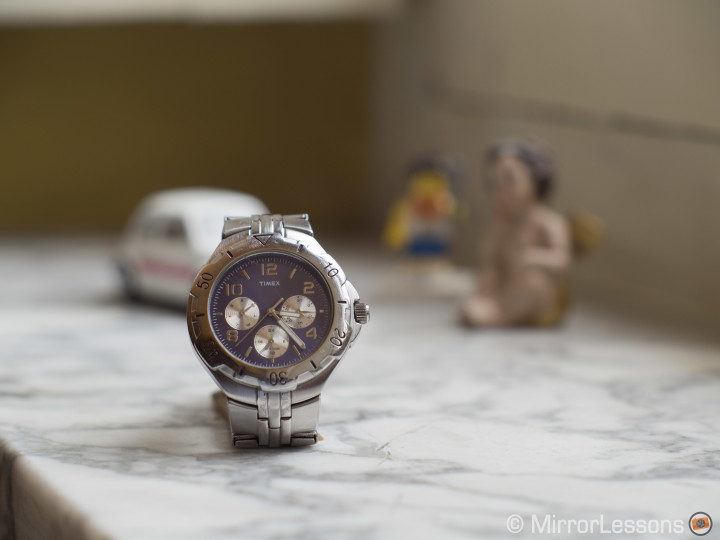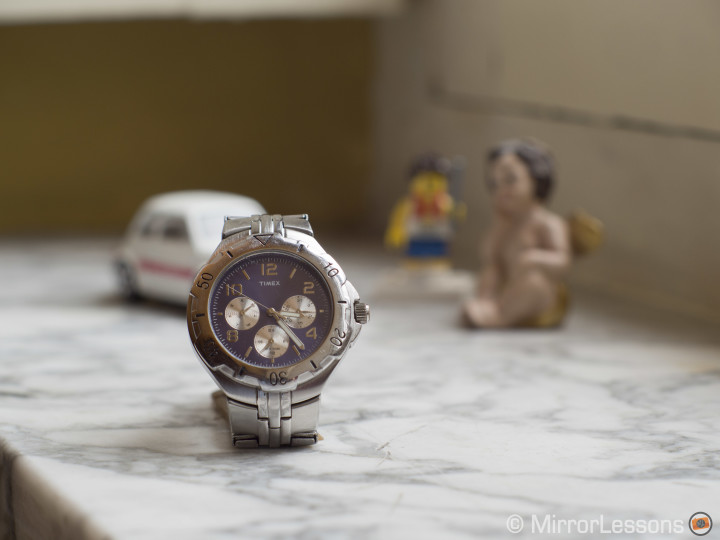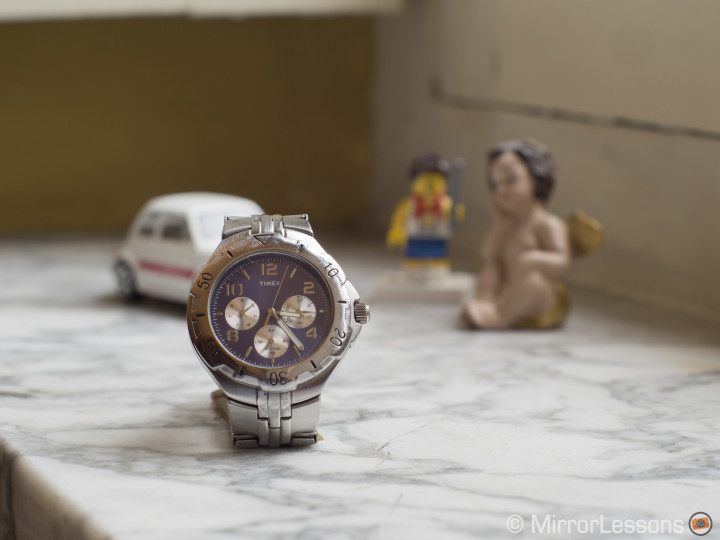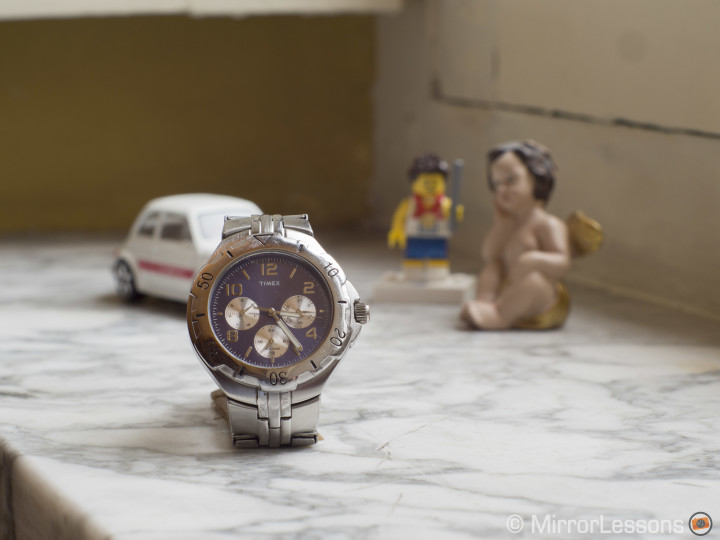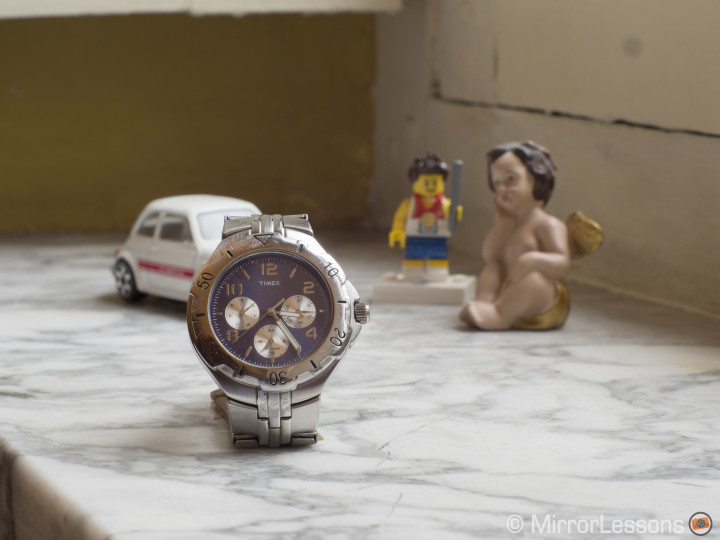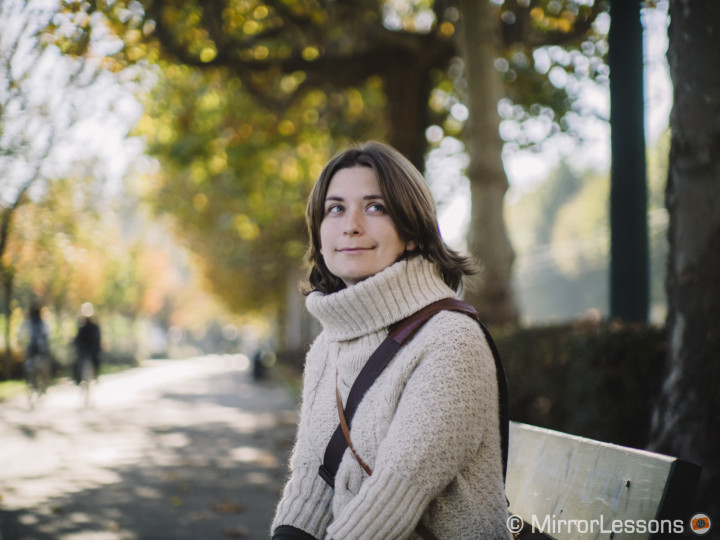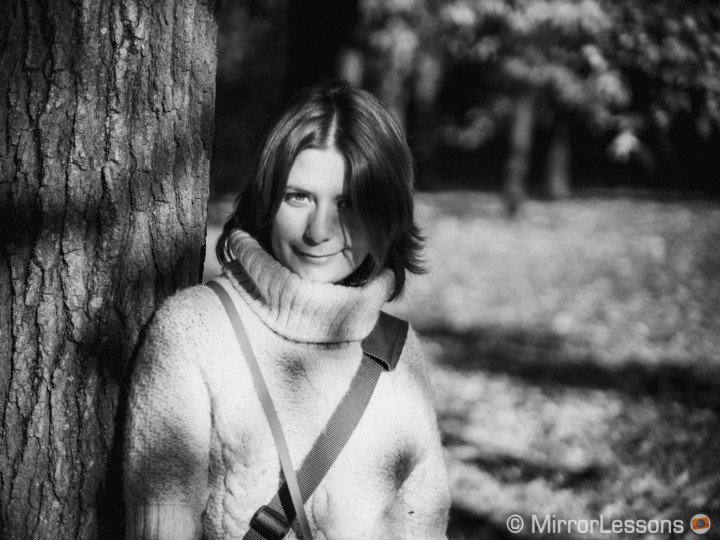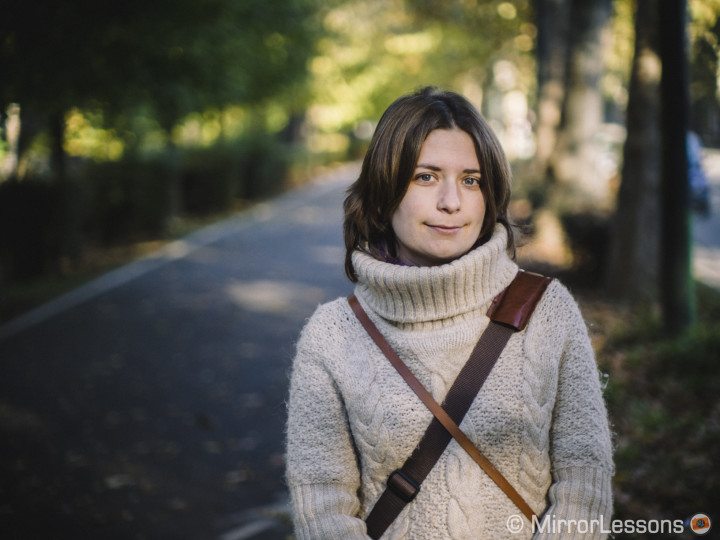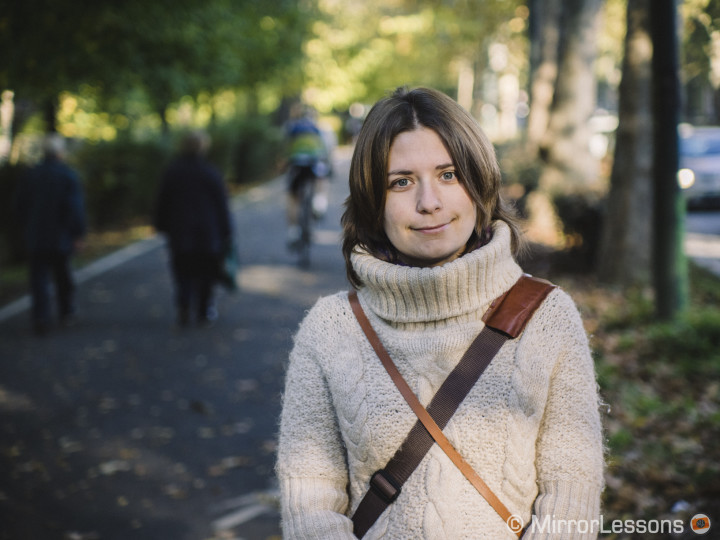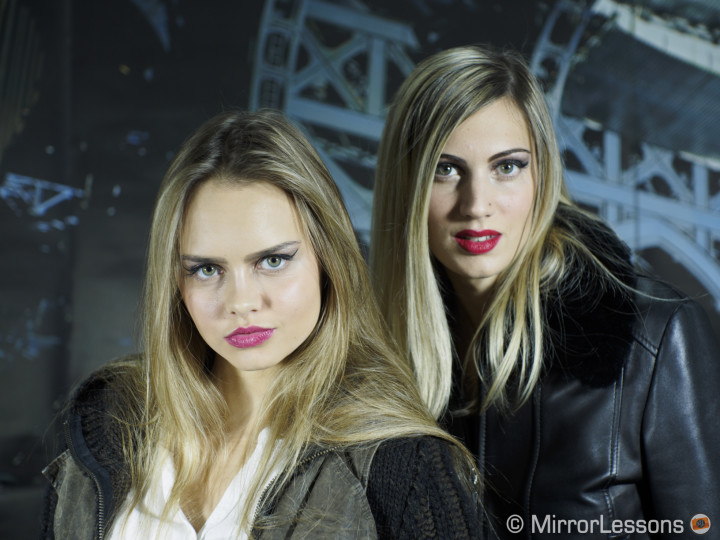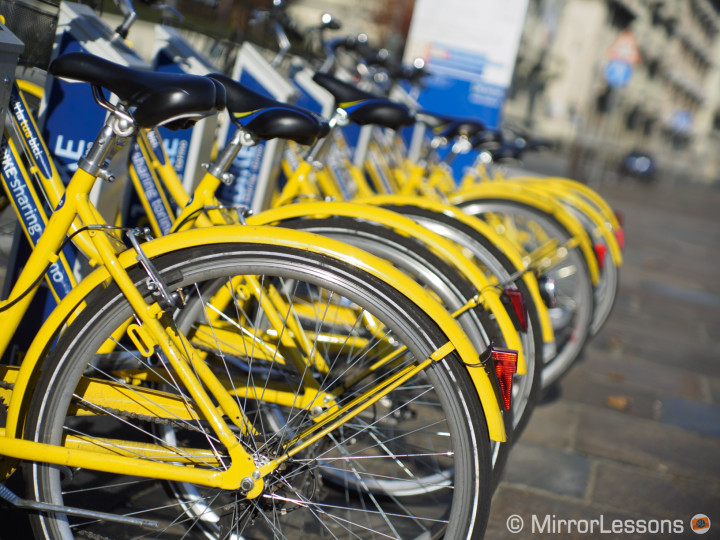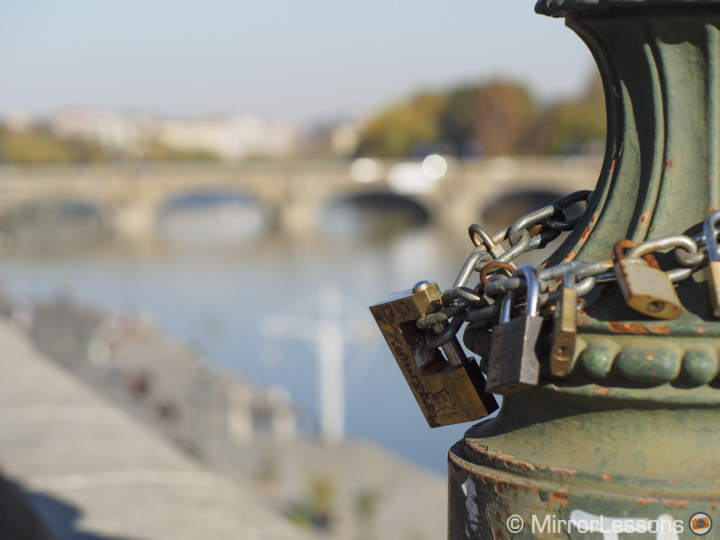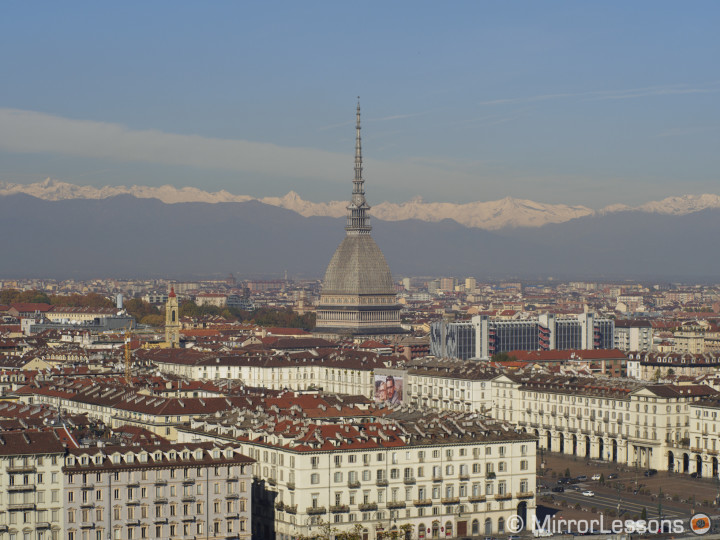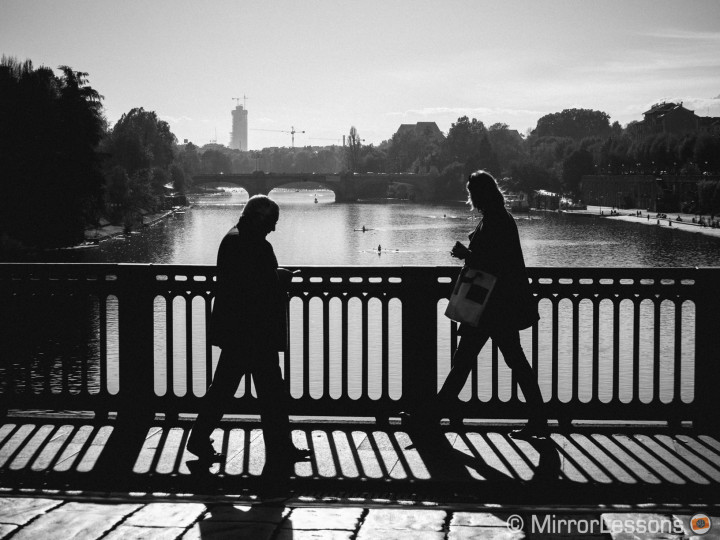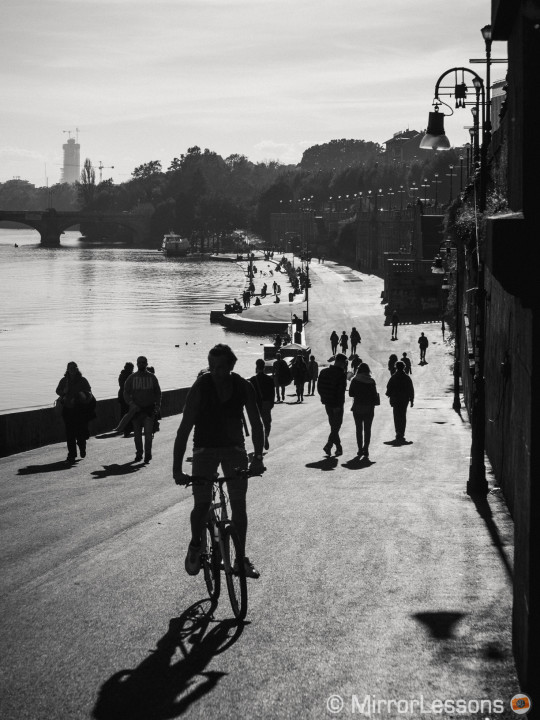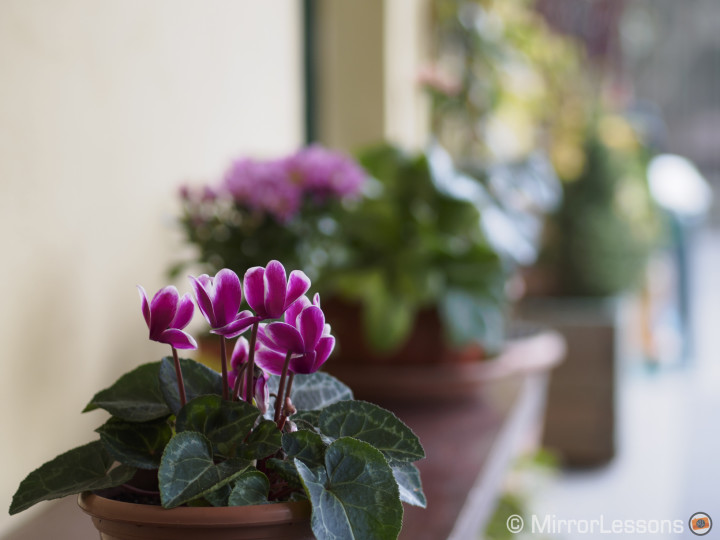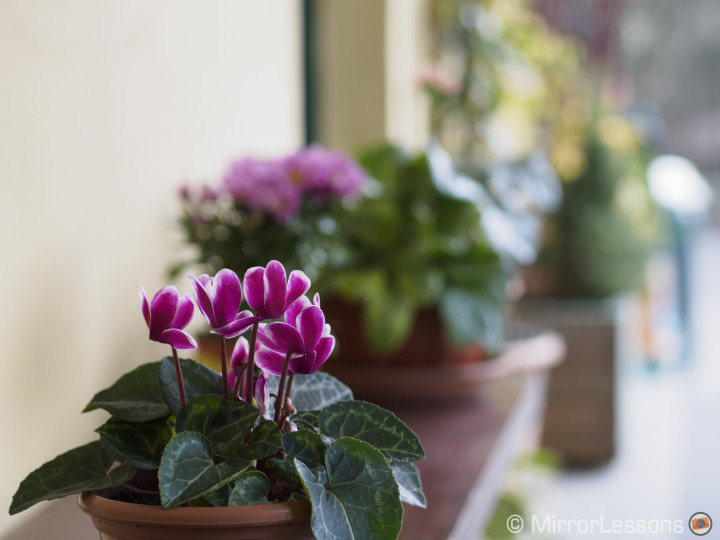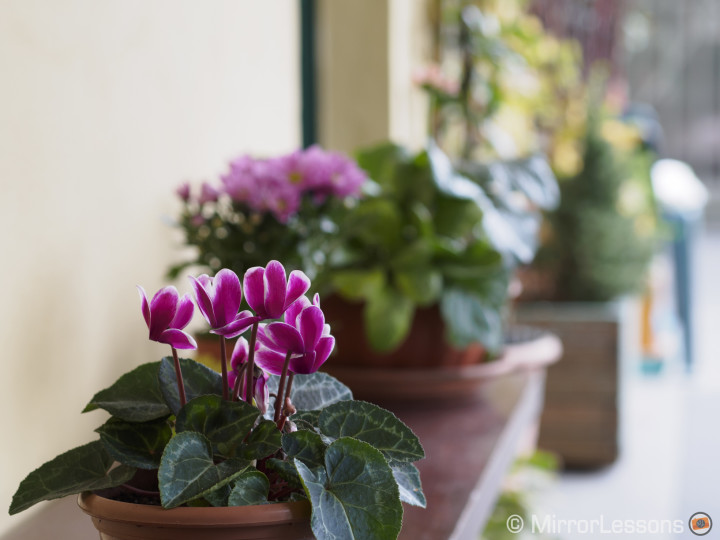Zhong Yi Optics is a Chinese manufacturer known not only for its adapters but also its Speedmaster lens series. Their latest addition, the 50mm f/0.95 for the Sony full-frame system in particular, has generated lots of curiosity because of its ultra fast aperture and very affordable price. At Photokina this year we met with the ZY Optics team to have a first look at the new 24mm and 42.5mm lenses announced in September. They also kindly sent two samples for us to review over the course of a week.
The 24mm f/1.7 and 42.5mm f/1.2 are two manual focus lenses designed for the APS-C sensor. They are available for Sony E-mount, Fujifilm X-mount and the Micro Four Thirds mount. We received samples for the Micro Four Thirds mount since the E and X mount weren’t ready two weeks ago. Being designed for a larger sensor, a Micro Four Thirds camera won’t use the total surface area of the lenses. As such we have an equivalent focal length of 48mm and 85mm on a full-frame camera.
The Mitakon 24mm f/1.7 Main Specs
- Focal length: 24mm
- MFT equiv. Focal length (35mm): 48mm
- Maximum aperture: 1.7
- Minimum aperture: 22
- Number of aperture blades: 12
- Closest focusing distance: 15cm
- Lens configuration: 9 elements / 8 groups
- Special elements: not specified
- Lens surface coating: No
- Focus: manual only
- Optical Image Stabiliser: No
- Dimensions: φ61.5 Ø, 55 mm
- Filter diamater: 49mm
- Weight: 246g
The Mitakon 42,5mm f/1.2 Main Specs
- Focal length: 42,5mm
- MFT equiv. Focal length (35mm): 85mm
- Maximum aperture: 1.2
- Minimum aperture: 16
- Number of aperture blades: 9
- Closest focusing distance: 45cm
- Lens configuration: 9 elements / 7 groups
- Special elements: not specified
- Lens surface coating: No
- Focus: manual only
- Optical Image Stabiliser: No
- Dimensions: φ60 Ø, 52.5 mm
- Filter diamater: 49mm
- Weight: 310g
[toc heading_levels=”3″]
Build quality and ease-of-use
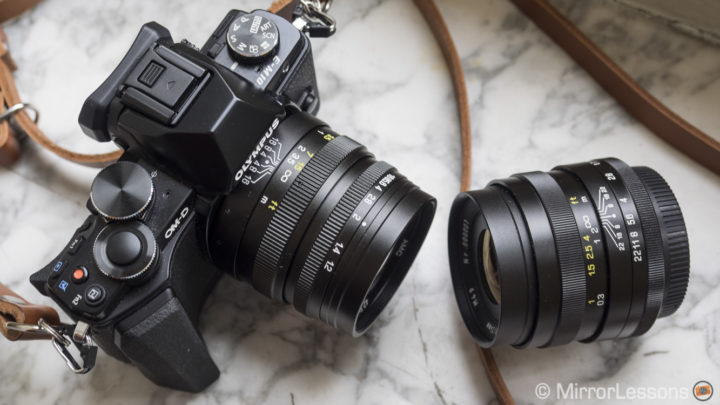
Both lenses are made of pure metal. The lens doesn’t include a chip, meaning that there isn’t any electronic communication with the camera. Of course this also means that the aperture used won’t show up in the exif data. In order to include the aperture used for the images in this article, I had to take notes on my iPhone every time I changed it. Of course this might be less of a problem for a normal user but in my case I couldn’t take the risk. Both aperture rings are also de-clicked, something that video users will appreciate.
The 24mm’s aperture ring is very close to the mount. There isn’t any space between the mount and the aperture ring so depending on the camera you use, it can be a little uncomfortable to reach as your fingers will rub against camera body. Trying it on the E-M10, E-M1 and GH4, the most uncomfortable to work with was the GH4 because the top of the camera (where the built-in flash is) protrudes forward and covers the aperture marks. To see which aperture you are using, you have to tilt the camera. It’s nothing dramatic–just a little bit uncomfortable. This is generally less of a problem on rangefinder style cameras.
What’s more, when mounting or unmounting the lens, you have to be more careful about where you place your fingers. On most lenses, you would naturally twist off the lens with your fingers close the mount. Since this is exactly where the aperture ring is found on the ZY Optics lenses, it is better to wrap your fingers around the hyperfocal scale surface instead when you want to unmount the lenses. The aperture ring is smooth to turn but strong enough that your aperture won’t change inadvertently. The focus ring is smooth and pleasant to turn as well.
The only complaint I have has to do with the markings on the lens. First, the hyperfocal scale is very tiny and difficult to use with precision. The aperture values are not equally distant on the ring. The f/22, 11 and 8 values are really close to one other and I sometimes felt that a clicking ring would have been more comfortable. Moreover, the red dot that indicates where to mount the lens is very tiny.
The 42.5mm houses its aperture ring on the front of the lens which immediately makes it easier to use. The aperture ring is a little harder to turn than the one on the 24mmm. The focus ring however is smoother. I have the same kind of complaint regarding the markings as well: on the aperture ring, the f/16, 8 and 5.6 are crammed together, so much that you’ll likely confuse them, especially between 8 and 5.6. The hyperfocal scale is even smaller on the 42.5mm and being closer to the mount, it will be hidden by the protruding parts of the camera body on the E-M1 or GH4.
Image quality: Mitakon 24mm f/1.7
Note: The 24mm sample we received may have been defective. We are currently in contact with the designers to find out if this is the case.
On fast aperture lenses, the first curiosity is to see what it is capable of at, you guessed it, its fastest aperture. So let’s start with some pictures shot at f/1.7. As you can see, they show that the lens is quite soft at that aperture.



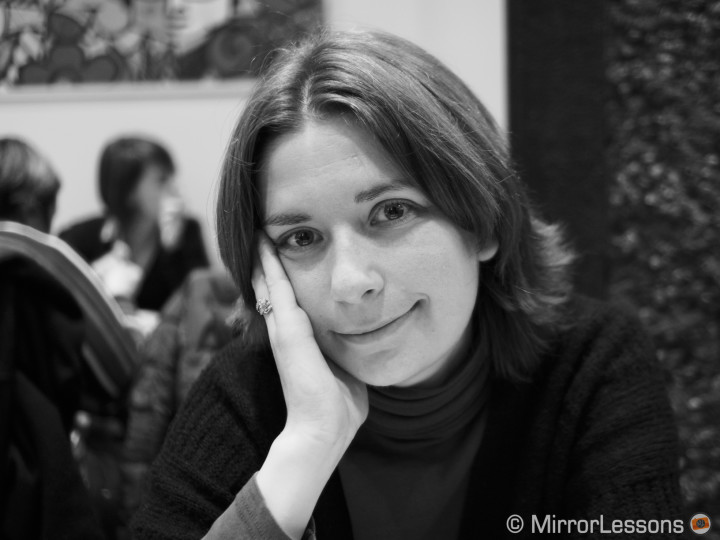
To be completely sure about my focus accuracy, I decided to do some homemade tests with the camera set on a tripod. I can confirm from these tests that at the fastest aperture the lens is soft. If we stop down to f/2.8 things get much better.
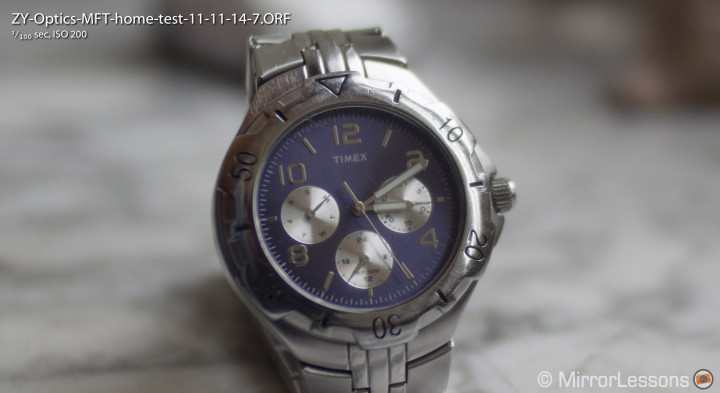
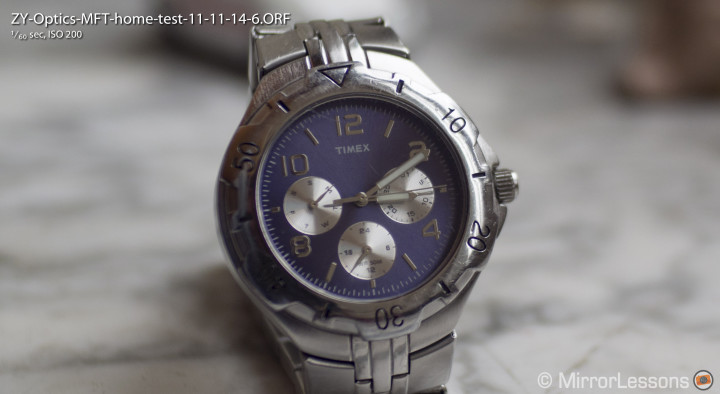
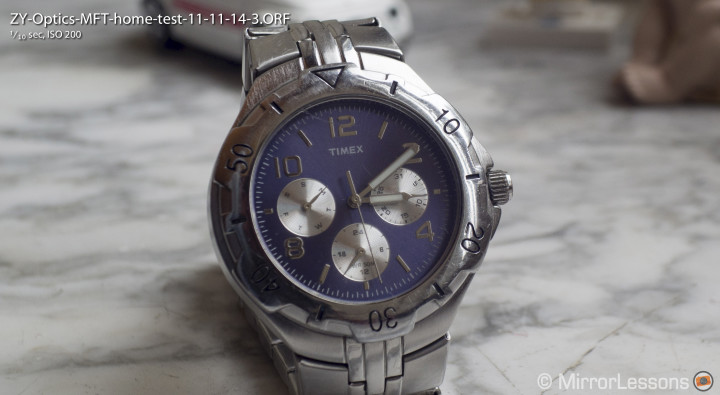
Below you can check out some real world examples taken between 2.8 and 11. I would say that for normal use, especially for street photography, the lens is fine from f/2.8 onwards.
The most negative point regarding the 24mm lens is the barrel distortion. In some examples, like the pictures shot at f/8 below, it is quite visible.

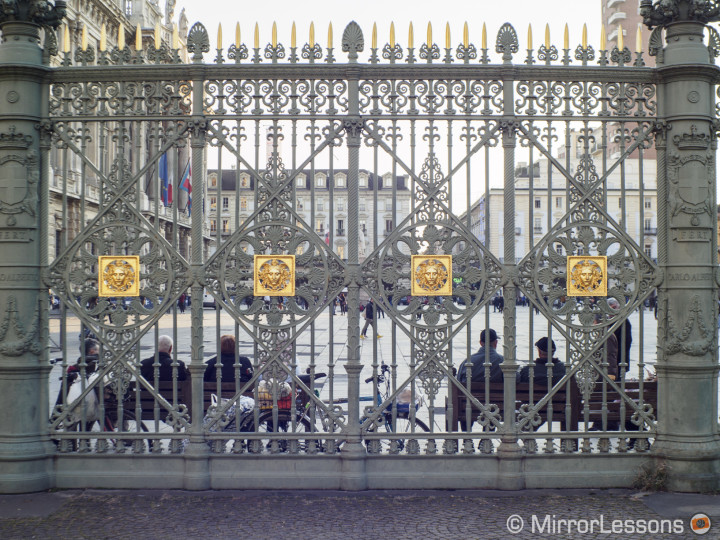
There is also a noticeable lack of sharpness at the corners, especially on the left side. I admit that this is even more surprising since the lens is designed for APS-C. (The E-M10 isn’t using the entire surface of the lens.) This makes me wonder what the results would be on a Fujifilm or Sony APS-C camera. The softness at the corners is reduced at f/11 and then f/22 where the lens reaches its ultimate performance in terms of sharpness both at the center and in the corners.
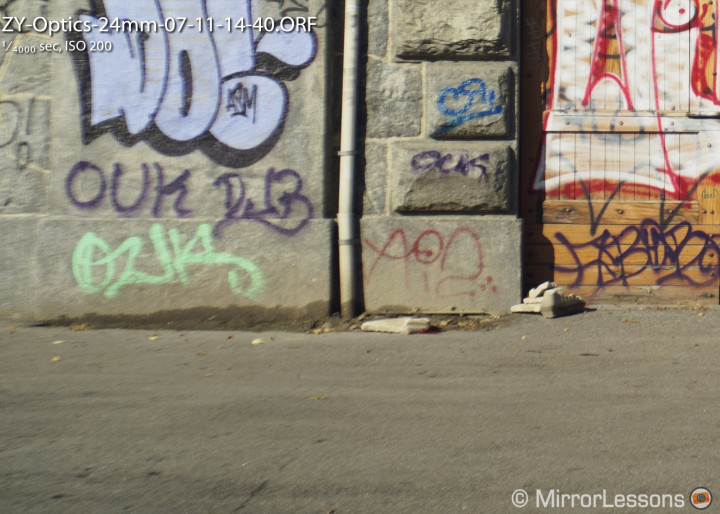
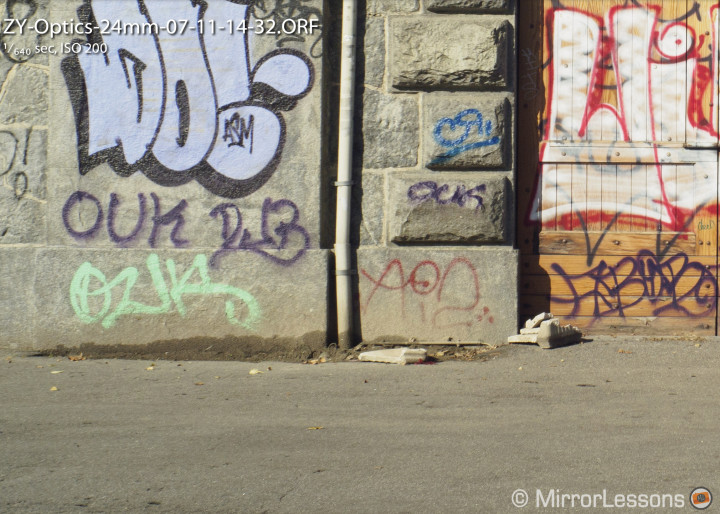
A positive thing about the 24mm is the minimum focussing distance of 15cm, which allows you to take close photos of objects or natural elements and get a very nice shallow depth of field. This is perhaps the most positive aspect about this lens.
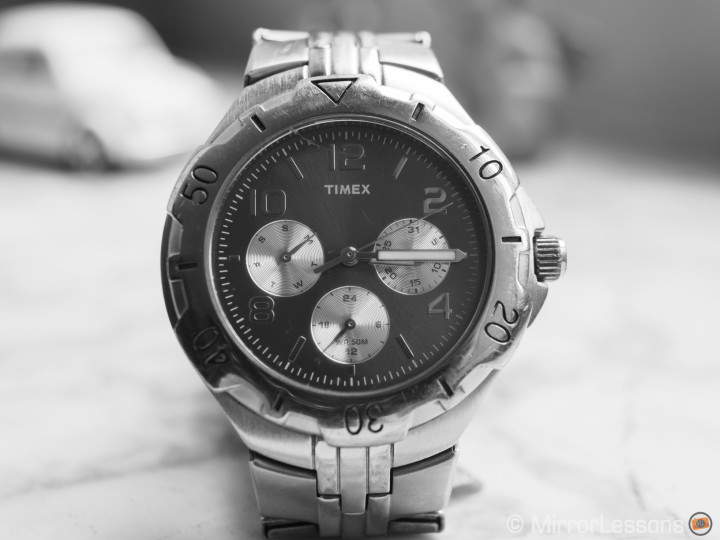
I haven’t found any trace of vignetting but this is also due to the fact that M4/3s cameras don’t use the extreme edges of the lens. It might be different on a Fujifilm or Sony APS-C camera. Chromatic aberrations are there but most of the time you have to look for them, so the 24mm doesn’t perform badly in this respect.
The lens doesn’t include any sort of nano-coating or anti-flare treatment and a lens hood isn’t provided in the box. You might consider getting one because flares can be pretty invasive with this lens. As in the picture below, I actually find it quite interesting for certain compositions especially after converting the picture to B&W. This is an example of how a limitation of a lens can still be used in our favour.

But just be aware that you can also end up with results like the examples below.
Coming back to the aperture ring and the values marked on it, I suspect that they are not perfectly precise in relation to the real apertures of the lens. My concern is mainly with the two slowest apertures: f/11 and f/22. There is a 2 stop gap (f/16 isn’t marked) but when I switch from f/11 to f/22 the camera metering only shows 1 Ev of difference while you would naturally expect a 2Ev difference. Both metering from the GH4 and E-M1/E-M10 show the same evaluation. For now I can guess that I either got a sample that has an issue or that the lens doesn’t go slower than f/16.
The 24mm gives you an equivalent focal length of 48mm which is pretty close to the standard focal length we know and love. This is perhaps another limitation of this lens because there are already two very good prime lenses for the MFT system from Olympus and Panasonic. Granted, this Mitakon 24mm is less expensive and you get a pure mechanical feeling which will certainly please some of you. But the difference in price is less important if we consider that we are talking about manual versus autofocus lenses. I did a quick comparison between the Mitakon 24mm and the Leica Summilux 25mm f/1.4 (I don’t own the M.Zuiko 25mm) and the latter wins for about everything except the minimum focussing distance.
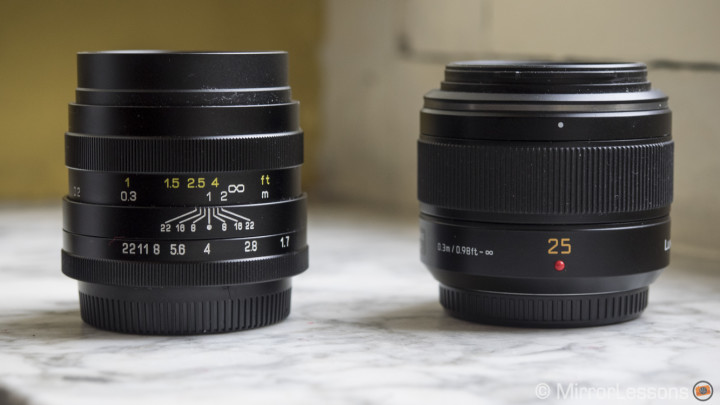
Image quality: the Mitakon 42.5mm f/1.2
The 42.5mm is more interesting for M4/3s users because its focal lengths is equal to an 85mm on a full-frame sensor which is the standard portrait lens. Furthermore, it is a much cheaper alternative to the excellent Nocticron 42.5mm f/1.2 (see our review here). Of course the main question is: can it equal its performance?
Well surprisingly at f/1.2 I find it performs very well. To be honest, I was expecting less impressive results because my first impression at Photokina wasn’t entirely positive. Below are some examples shot at f/1.2.
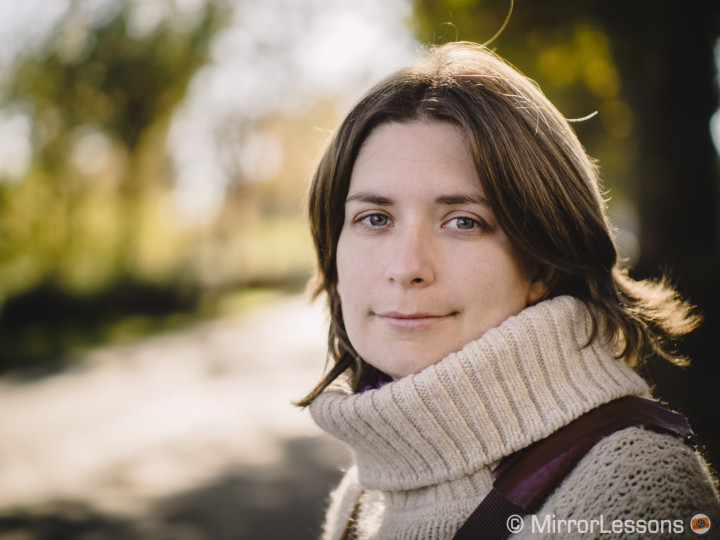
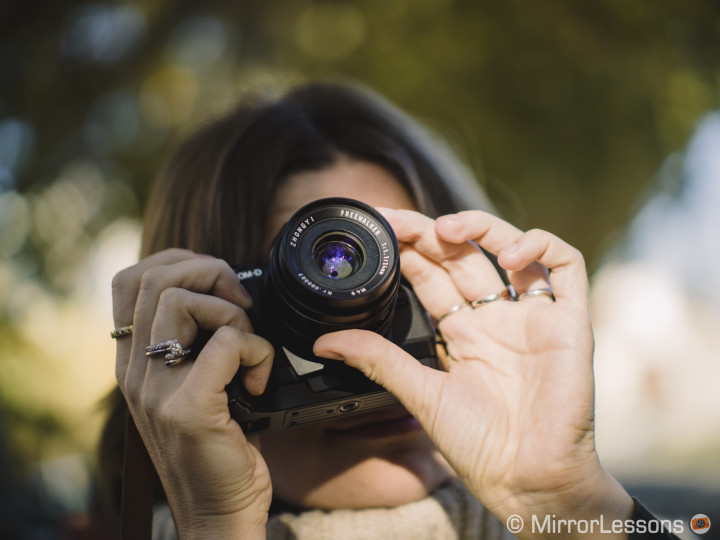

As for the 24mm, I also performed a similar homemade test to check the sharpness at every aperture. Manual focusing at 1.2 is definitely not easy and I used both the peaking and focus magnification on the E-M1. The test shows that the lens is soft at f/1.2 but becomes sharp from f/2 and up.
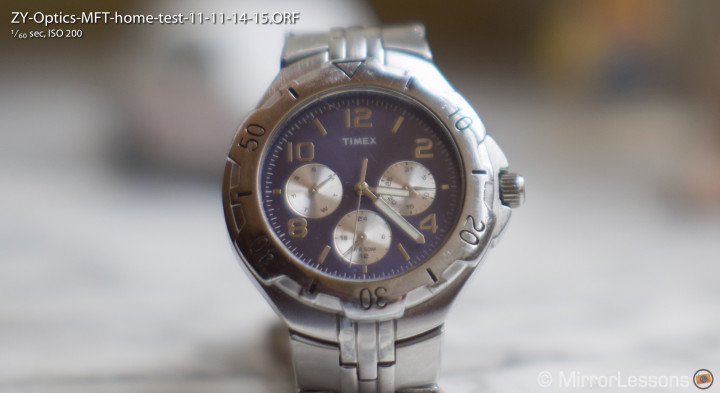
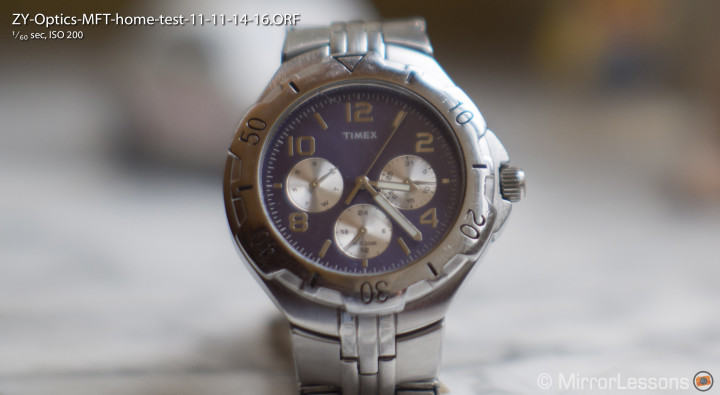
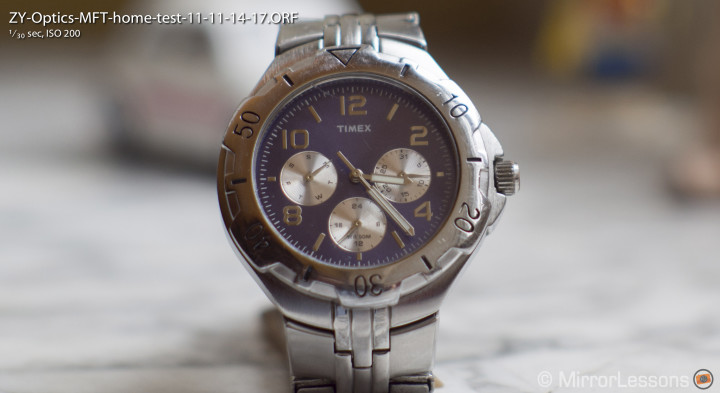
Regarding vignetting and chromatic aberration, the 42.5mm’s performance is satisfactory. For vignetting, the sensor size argument we raised before when talking about the 24mm remains valid for the 42.5mm as well. Chromatic aberration can appear especially at 1.2 and 1.4 like in the watch example above but like the 24mm you generally have to search for them.
Below are more real world examples taken at various apertures where you can also see the quality of the bokeh rendering. This is definitely a good portrait lens in my opinion. It isn’t razor sharp at 1.2 and certainly doesn’t rival the Nocticron 42,5mm f/1.2 but it is a nice manual focus alternative for far less money that gives a look to the image that I personally like. Note that my focus isn’t always accurate so to judge the sharpness of the lens, please refer mainly to the “watch” test above.
I did a comparison with the M.Zuiko 45mm f/1.8 as well. The reason is that the lenses have a similar price tag and I was curious to see whether the Mitakon can be a real alternative portrait lens for M4/3 users on a budget, especially considering its 1 stop aperture advantage.
At their fastest apertures respectively, the M.Zuiko is sharper but the Mitakon lens has a one stop advantage. At f/2, the M.Zuiko has a slight advantage but the performance is much more similar. The bokeh rendering is also very similar but the Mitakon has the advantage of being able to focus a little bit closer (45cm vs 50cm) and having the 1.2 aperture. The M.Zuiko also has more contrast. If you already own the 45mm, then I don’t think the Mitakon is really worth it but if not and you are looking for an alternative portrait lens, the 42.5mm can definitely be an interesting option to consider.
Use for video shooting
Since both lenses have a non-clicking aperture and a nice mechanical focus ring I was curious to put the two Mitakon lenses to test for video use as well. Below I shot a quick movie starring Heather reading in the park with the Panasonic GH4. I used both lenses at various apertures but most often at 1.4 and 1.7. The footage was shot in 4K at 25fps with the Cine-Live V picture profile. I then graded slightly in Premiere Pro.
The 24mm is capable of rendering a very nice bokeh and while it is not my preferred lens for stills of the two, it is for video. Its close focussing capabilities and bokeh rendering make it an interesting lens to use for video shooting. The 42.5mm is also nice but at 1.2 and 1.4 you have issues with blurred edges that can appear more or less evident depending on the light. You may also notice it in some shots where I pull focus from the background to the foreground. You can notice some white blurred edges or blurred distorted edges. Nothing dramatic of course but the lens performs better from f/2. Both lenses seem sharper for video than for stills. Manual focusing with the lens and the GH4 is a joy and very precise thanks to the GH4’s peaking option.
Conclusion
Above and beyond the nice metal and mechanical feel that manual focus lenses can give, I think that they can be of real benefit to users if they offer something more at a similar price than the corresponding autofocus lenses. I would say that this is the case with the 42.5mm. Its fast aperture of 1.2 can give you a nice bokeh and an overall beautiful rendering for portraits with that slightly vintage look you might appreciate. At 1.2 it isn’t razor sharp but still usable in my opinion if you look at the whole picture and don’t make a habit of pixel peeping.
Unfortunately the 24mm is less interesting for stills in my opinion mainly due to some limitations concerning the image quality. The lack of sharpness in the corners is severe and becomes less noticeable only at f/11 and f/22. Neither its fastest aperture of 1.7 nor the 1mm of difference in focal length will give you an advantage in comparison to native 25mm AF lenses. (Do keep in mind that this may have been a faulty sample.)
For video use however they can become more interesting for their bokeh rendering and the overall vintage look they give to the footage (if you like this kind of rendering of course).
Both lenses have also been designed for APS-C and I am curious to see how they perform on a Sony a6000 or a Fujifilm X-T1. The 24mm and its fastest aperture might be a more interesting focal length since it would give an equivalent of 35mm in full-frame format. However I also wonder whether the sharpness problem might become amplified on the sensor they have been made for.
 What I like about the Mitakon 24mm f/1.7
What I like about the Mitakon 24mm f/1.7
- Minimal focus distance of 15cm
- No vignetting and minimal chromatic aberration
- Nice to use for video
 What I don’t like about the Mitakon 24mm f/1.7
What I don’t like about the Mitakon 24mm f/1.7
- Lack of sharpness in the corners even at “usually safe” apertures like f/8
- barrel distortion
- lens flares
 What I like about the Mitakon 42,5mm f/1.2
What I like about the Mitakon 42,5mm f/1.2
- Passable at f/1.2, sharp from f/2
- Nice bokeh rendering
- Intersting for video use as well
 What I don’t like about the Mitakon 42,5mm f/1.2
What I don’t like about the Mitakon 42,5mm f/1.2
- Some aperture markings on the ring are too close
- Unusable hyper focal scale (for what is worth with this kind of lens)
You can purchase these ZY Optics lenses from the official website.
What do you think of the Mitakon 24mm and 42.5mm? Would you be interested in these manual focus lenses?
